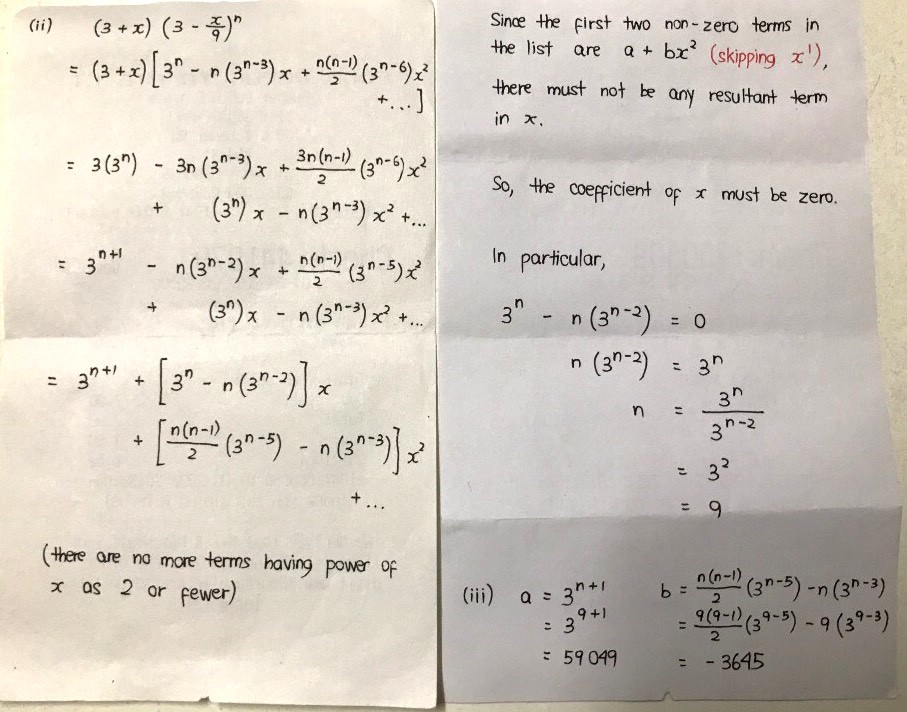Eric Nicholas K's answer to lana <3's Secondary 3 A Maths Singapore question.
done
{{ upvoteCount }} Upvotes
clear
{{ downvoteCount * -1 }} Downvotes
Q18ii and Q18iii
Date Posted:
2 years ago
hii ! for 18 (ii) the fourth line I’m not quite sure how you derived your answer
sorry the fourth line and the third line how did you get 3^n-2 and 3^n-5 ?? I’m not quite sure how you came to that conclusion !
We use the rules of indices to obtain it.
In the expression 3n times 3^(n - 3), I combined the 3 and the 3^(n - 3) together.
When you use the rules of indices to multiply such expressions, the powers get added.
In particular,
3 times 3^(n - 3)
= 3^1 times 3^(n - 3)
= 3^(1 + n - 3)
= 3^(n - 2)
Similarly, in the expression 3n (n - 1) divided by 2 times 3^(n - 6), I combined the 3 and the 3^(n - 6) together to obtain
3 times 3^(n - 6)
= 3^1 times 3^(n - 6)
= 3^(1 + n - 6)
= 3^(n - 5)
The simplification into a single power of 3 is important for this question as it helps us to simplify our result later on.
In the expression 3n times 3^(n - 3), I combined the 3 and the 3^(n - 3) together.
When you use the rules of indices to multiply such expressions, the powers get added.
In particular,
3 times 3^(n - 3)
= 3^1 times 3^(n - 3)
= 3^(1 + n - 3)
= 3^(n - 2)
Similarly, in the expression 3n (n - 1) divided by 2 times 3^(n - 6), I combined the 3 and the 3^(n - 6) together to obtain
3 times 3^(n - 6)
= 3^1 times 3^(n - 6)
= 3^(1 + n - 6)
= 3^(n - 5)
The simplification into a single power of 3 is important for this question as it helps us to simplify our result later on.



